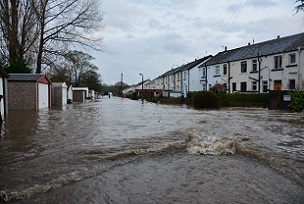 Flooding causes catastrophic damage inside homes
Flooding causes catastrophic damage inside homes
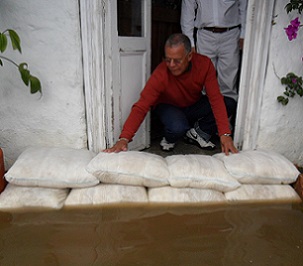 FloodSax alternative sandbags keeps floodwater out
FloodSax alternative sandbags keeps floodwater out
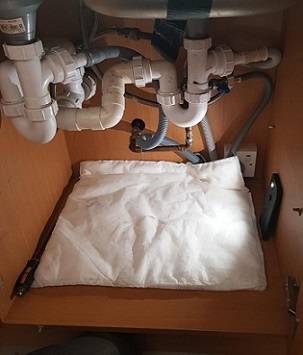 FloodSax are used indoors to soak up drips and leaks in hard-to-reach places
FloodSax are used indoors to soak up drips and leaks in hard-to-reach places
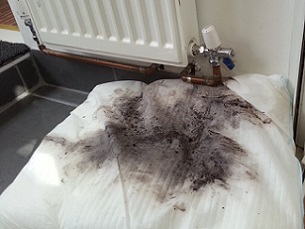 FloodSax can save hundreds if not thousands of pounds damage in a flooding emergency
FloodSax can save hundreds if not thousands of pounds damage in a flooding emergency
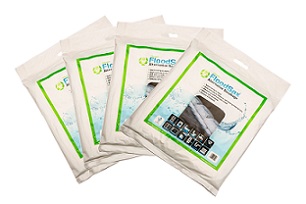 FloodSax are vacuum-packed making them exceptionally space-saving to store
FloodSax are vacuum-packed making them exceptionally space-saving to store
Many home insurance policies have huge excesses for flood and escape of water claims … better check if yours does too
People may be in for a nasty shock when they try to claim on their home insurance after a flood or water leak … the size of their excess.
Although floods and escape of water (there is a difference) are usually covered by insurance policies, people will often have to pay a lot out in excess before the insurance kicks in.
It can be way over what you expect.
Yorkshire entrepreneur Richard Bailey, who runs a company called Environmental Defence Systems Ltd, said: “One of our members of staff claimed on his insurance for a broken TV and the excess was £100. But when he was looking through the policy he noticed the excess for a flood was £350 and it was the same amount for an escape of water.
“He had never claimed for either so it’s worth people checking their insurance policies to see just how much they would have to pay out if they ever had to make a claim. If it’s a lot it’ll be well worth thinking of ways to prevent a flood in the first place or have something on hand to soak up the water immediately.”
For example, a box of 20 FloodSax alternative sandbags (more info below) which can also be used indoors to soak up leaks and floods indoors costs around £150 – way less than excesses on most insurance policies.
A flood is water coming into your home such as torrential rain or a burst water main.
An escape of water means it has come from a water source within your home such as a burst pipe or a leaking dishwasher.
The reason the excess is so high is that water damage is one of the most common types of claims for insurance companies … and one of the most expensive. The average insurance claim after a flood in a house is £31,000 and just an inch of water can quickly rack up a £20,000 repair bill.
According to the Association of British Insurers, £1.8m is paid out every DAY for water damage claims in the UK. Between 2014 and 2018 the average escape of water claim increased by 40% and there is no reason to think it’s not going to keep on rising. Nearly one in five claims made on buildings and contents insurance is for damage caused by leaks.
Water leaks cause colossal damage and are known within the insurance industry as “the thief who takes everything” as the average insurance claim for an escape of water is around 37 times higher than for a burglary.
Water damages everything it touches, wrecking carpets, floors, furniture and electrics which are all very expensive to replace.
According to the Association of British Insurers: “The smallest of leaks can quickly become a torrent and cause some very expensive and disruptive damage. Don’t overlook or underestimate the warning signs.”
So what are the causes that lead to an escape of water in homes?
Well, it includes worn washers on taps, frozen pipes could burst, hoses to washing machines and dishwashers will get worn and split, clogged drains caused by a build-up of hair and grease from toiletries in showers and sinks can send water flowing across the bathroom floor and through the ceiling, baths get accidentally left switched on. Even clogged gutters can send water flowing down the side of your house, damaging the ceiling, walls and floors. Water always finds the weakest spot on your property to get in.
More and more homeowners are now turning to a multi-purpose product called FloodSax to help prevent or mitigate expensive escapes of water.
A standard FloodSax resembles a large pillowcase and measures 500mm by 450mm by 20mm. This large, flat and ultra-thin surface area means they can be slipped into the most inaccessible places to catch dripping or leaking water. These are spaces where you’ve no chance of getting a bucket or any other kind of container.
FloodSax will absorb up to 20 litres of water, potentially saving thousands of pounds of damage and they are white so immediately show up water marks which means you can quickly alert a plumber before the water damage gets worse.
FloodSax are also known as alternative sandbags or sandless sandbags. When fully immersed in water, the gelling polymer inside the FloodSax absorbs the water and retains it so the FloodSax expands to resemble a traditional sandbag. Their uniform size means they can be quickly and neatly stacked into a highly effective flood barrier.
People searching for FloodSax online call them floodsacks, floodbags, flood_bags, sandbags other, alternative sandbags, sandless sandbags, gelbags and polymer bags but there is only one multi-use FloodSax.
FloodSax are trusted by plumbers and helped to save countless thousands of pounds when a flooding disaster hit a house in Yorkshire. The toilet upstairs was leaking from a corroded old lead pipe and plumber James Lucks from Huddersfield quickly surrounded the toilet with FloodSax which he also put across the bathroom floor.
It was lucky he did as seal on the old lead pipe suddenly broke, sending gallons of water gushing across the bathroom floor. Most of it was soaked up by the FloodSax.
James said: “The FloodSax not only saved the day but the customer an awful lot of money in damage. The FloodSax soaked the water up which meant it didn’t penetrate the floor and leak through to the ceiling below. If the water had gone straight onto the floor it would have brought the ceiling down for sure.”
Homeowner Christine Butler from Gloucestershire has ‘flood-proofed’ her flat with FloodSax after a leak from a neighbouring flat badly damaged her ceiling. She has placed FloodSax underneath anywhere there are pipes or appliances that could cause a leak such as the bath, boiler and beneath the kitchen sink.
Christine added: “The FloodSax is like an early warning system which gives people valuable time to sort a plumber out before it deteriorates and that’s why I have them under anywhere which could cause a flooding problem.”
FloodSax come in handy packs of 5 and there are 4 packs in each box which retails for around £150 – a small price to pay when you think just how much damage a flood will cause to your home.
And it’s way under what you’d pay as your insurance premium excess when making a flooding claim.
To buy FloodSax simply click here.